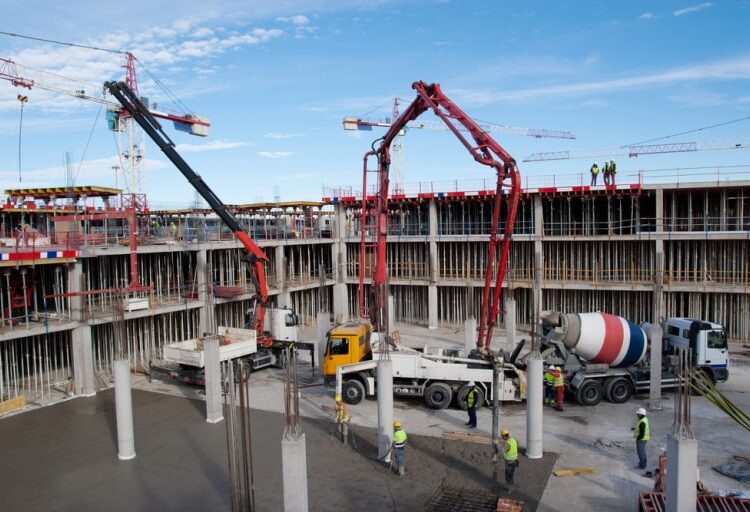A bustling construction site utilizes heavy machinery and equipment to carry out various tasks. However, the potential malfunction of construction equipment can pose significant risks to workers’ safety and the timely completion of projects. As such, employers are responsible for minimizing these risks by implementing proactive measures and diligent oversight.
Employers must establish and enforce comprehensive safety protocols and regular maintenance schedules to ensure the reliability and safety of construction equipment. By doing so, they can greatly mitigate the likelihood of malfunctions and protect the well-being of their workforce. Additionally, seeking guidance and support from legal professionals such as Warhawk Injury Lawyers can be beneficial in equipment-related injuries, offering a valuable resource to uphold the rights and safety of workers.
Implementing Regular Maintenance Checks
Conducting regular maintenance checks to ensure that construction equipment is operating at its best is crucial. By scheduling routine inspections, any signs of wear and tear, potential failures, or necessary repairs can be identified before they escalate into major issues. These inspections should only be carried out by qualified technicians with the expertise to assess the condition of the equipment accurately.
Incorporating a systematic maintenance schedule into the daily operations guarantees that all machinery undergoes thorough inspections at set intervals. This proactive approach not only prolongs the lifespan of the equipment but also significantly improves safety on the construction site, reducing the risk of accidents and malfunctions.
Training Workers on Equipment Use
Employers must provide thorough training to workers to prevent equipment malfunctions. All equipment operators should receive comprehensive training on handling the equipment safely and efficiently. This training should cover the equipment’s capabilities, limitations, and emergency procedures.
Employers should regularly update training programs to incorporate new safety protocols and technological advancements. By ensuring that workers are well-informed and skilled, employers can minimize the likelihood of operator errors that could result in equipment failures.
Using High-Quality Equipment
Investing in high-quality, reliable construction equipment is a fundamental step in reducing malfunctions. While cutting costs with cheaper machinery might seem attractive, it often leads to higher risks and more frequent breakdowns. Employers should prioritize purchasing equipment from reputable manufacturers known for their durability and safety standards.
Additionally, using original parts for repairs and maintenance ensures compatibility and reliability. This practice can prevent unexpected failures and maintain the equipment’s integrity over time.
Implementing Safety Protocols
Implementing effective safety protocols is crucial for creating a secure working environment. Here are some key points to consider:
- Establish clear guidelines: Define detailed procedures for equipment operation, maintenance, and emergencies.
- Communicate protocols to employees: Ensure all employees know the safety guidelines through clear communication.
- Regular safety drills and training sessions: Reinforce safety protocols through consistent practice and training.
- Conduct regular audits and inspections: Regularly check for compliance with safety protocols to identify and address potential issues.
- Foster a culture of safety: Encourage a workplace culture that prioritizes safety to reduce the risk of equipment malfunctions and related accidents.
Monitoring Equipment Performance
Employers should establish robust monitoring systems to oversee their construction equipment’s performance continually. By leveraging advanced technology such as sensors and Internet of Things (IoT) devices, real-time data on equipment health and usage patterns can be collected. This data is invaluable in forecasting potential issues and planning proactive maintenance to mitigate problems before they occur.
Implementing monitoring systems also empowers employers to evaluate the efficacy of their maintenance programs and make informed, data-driven choices to improve the reliability of their equipment.
Encouraging Worker Reporting
Encouraging workers to report any signs of equipment malfunction or irregularities can help address issues promptly. Employers should create an environment where employees feel comfortable reporting problems without fear of reprisal. Establishing a clear reporting process ensures that potential malfunctions are addressed before they escalate into serious issues.
Providing incentives for reporting and actively responding to concerns can reinforce the importance of safety and collaboration on the construction site. This proactive approach can prevent accidents and improve overall equipment reliability.
Ensuring Proper Storage of Equipment
Proper construction equipment storage when not in use is crucial to preventing damage and malfunctions. Employers must ensure the provision of secure, weather-protected storage areas that shield machinery from environmental elements such as rain, snow, wind, dust, and extreme temperatures.
Regularly cleaning and correctly storing equipment is paramount as it extends its lifespan and guarantees it remains in optimal working condition. Implementing stringent storage protocols can substantially diminish the risk of malfunctions caused by environmental exposure, ultimately leading to cost savings and prolonged equipment durability.
Conducting Thorough Inspections After Repairs
After completing any repair or maintenance work on industrial equipment, it is essential to conduct comprehensive inspections to guarantee the safe reinstatement of the machinery into service. Employers must establish clear protocols for post-repair inspections, ensuring that qualified personnel are responsible for verifying that all underlying issues have been addressed and the equipment is operating properly.
These inspections should be thorough and meticulous, covering all aspects of the repaired or maintained equipment. It is vital to document the findings of these inspections meticulously to ensure that all issues are properly recorded. Any additional concerns or potential issues identified during the inspection process should be dealt with promptly to prevent any risk to the equipment or personnel.
Utilizing Professional Legal Guidance
In the unfortunate event of any equipment malfunction at a construction site leading to injury, it’s crucial to seek legal support from experienced injury lawyers in Oklahoma City. These legal professionals can offer invaluable guidance and support in navigating the complexities of personal injury claims, ensuring that affected parties receive the compensation they deserve to cover medical expenses, lost wages, and other damages.
Employers who prioritize safety and legal compliance not only contribute to a safer work environment but also demonstrate their commitment to the well-being of their employees, fostering a positive work culture. By implementing stringent safety measures and ensuring legal compliance, employers can significantly reduce the risk of construction equipment malfunctions, ultimately contributing to a safer and more efficient work environment for all workers.




